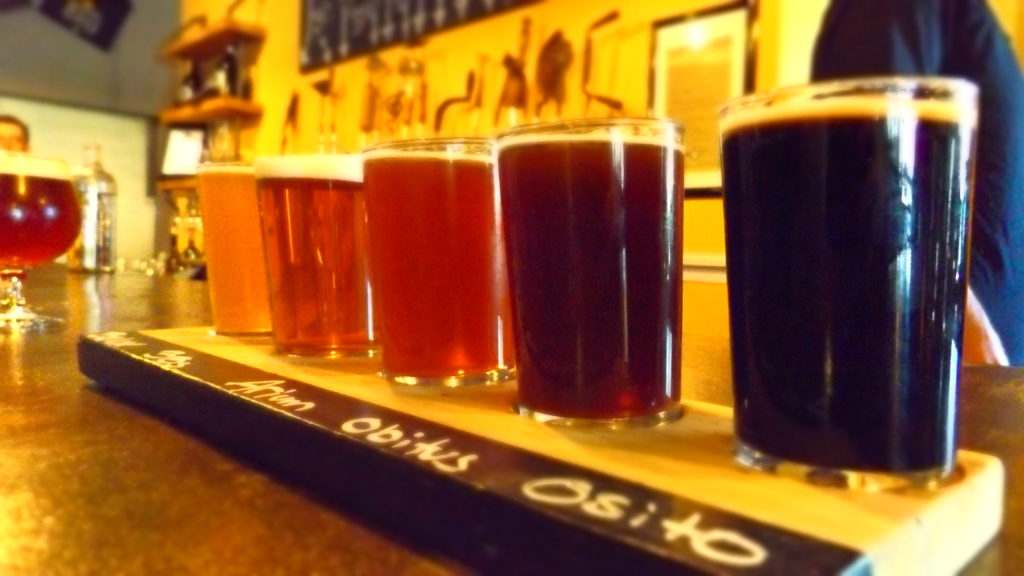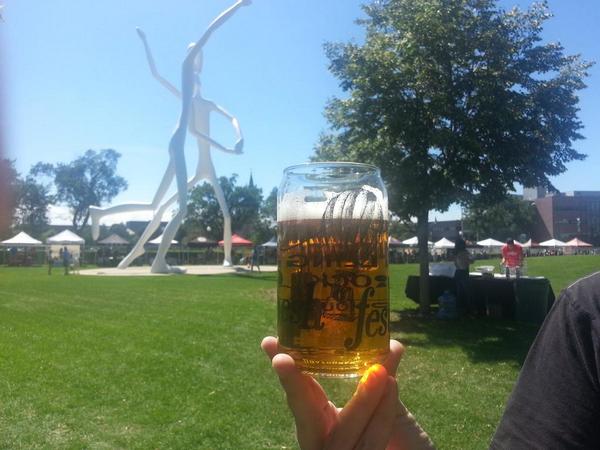By: Ryan Hodros, Culinary Arts Student
In the past month or so, I released a new drinker’s guide to beer, outlining the general expectations you can bring with you when trying a style of beer you’ve never experienced before. I’ve also released an article discussing some general guidelines to keep in mind while cooking with beer, including some meal ideas that have worked for me in the past.
Coming off a practical exam finishing out the Regional Cuisines block of the culinary arts program, I thought it would be fun to decompress a little bit by writing a pairing guide for beer drinkers who want to bring the perfect brew to compliment what’s on their table. Many a beer drinker will tell you it doesn’t matter, but many of the experts (and I) agree that there are some basic rules to keep in mind.
Color rules are similar to wine
A clever brewer can do a lot with the color of their brew without doing much to the flavor. For example, Dogfish Head Brewery in Rehoboth Beach Delaware has a beer called “Verdi Verdi Good,” which uses a blue-green algae to make their beer bright green (for St. Patrick’s Day). So there are times when you can’t trust the color of a brew to tell you what it will pair with.
First a bit of background: The color of a beer, excluding wilder brews like the above, sit on what is called the “Lovibond Scale.” This has been replaced in the professional brewing world with other, more scientific scales, but for the purposes of pairing the Lovibond Scale is the easiest to reference in a hurry. On one end of the scale is pale lagers, which start at “2°L” or two degrees Lovibond. On the other end is the dark beers, which can be upwards of 40°L and beyond.
For the most part you can treat “fizzy yellow lagers” like white wine, pairing it with fish, chicken, and pork. Deeper yellow, golden, and red ales can be thought of as Rosés, with a versatile flavor that goes okay with most meals, but not necessarily great. The darker end of the Lovibond Scale should be thought of as the reds, used mostly for beef, lamb, and other full-flavored meats. This rule isn’t 100% universal, and treating it as such could result in you pairing a beer with a meat in an off-putting way. But that’s alright, because you’re going to follow rule two…
Taste beer before you decide to pair.
As a general rule, I only pair beers I’ve had in the past with meals. I dislike bringing a brew I’m unfamiliar with to friends and family because for all I know, it could taste awful. That being said, sometimes it’s fun to plan a dinner party around everyone trying a new beer (like Ska Brewing’s recently released Rudie Session IPA) so that everyone can experience it for the first time together. In that instance, what is a host to do?
Cheat.
That’s right, taste the beer well before you start planning your meal so that you can cook the meal accordingly. Sure, that ruins the scientific integrity of everyone tasting the beer for the first time at the same time, but who cares? Get an idea of what your beer tastes like so you can put out hors d’oeuvres and construct a meal that compliments it. It also guarantees that you won’t accidentally pair a beer as per the Lovibond Scale and mute out the flavor of the meal or the beer.
Flavor Pairing is easier than you’d think
Because literally any food can be eaten alongside any beverage, and because there are dozens if not hundreds of beer flavors out there, it can be hard to wrap your head around the idea of pairing a brew with a meal. But because beer flavors are so diverse, the pairing is actually much easier than you’d thing. Here’s a quick reference guide:
- Hoppy Beers: Big flavor beers like pales and IPAs should be paired with big flavor meals. I suggest something spicy, as the bitters from an IPA wash the spice out of your mouth pretty effectively while the spice keeps you from going mouthnumb from all the hops. I suggest Mexican, southeast Asian, or Korean food, as they bring some interesting flavors besides spice (just like a good hop bomb).
- Malty Beers: These have more of a muted flavor, and so can easily be lost inside a mouthful of spicy curry or barbecue sauce. Many malty beers bring a light sweetness combined with toasted bread or subtle caramel, so the easiest way to pair these kinds of beers is to think of them as the bread in a sandwich. They go well with meaty, savory, and umami flavors. Chicken, pork, and (sometimes) beef go well with them, but be creative. If you can put it in a sandwich, you can probably pair it with a malty beer.
- Darker Beer: These tend to have some characteristics similar to malty beers, but can also be more bitter and somewhat heavy. I recommend pairing these with petit fours, canapes, and other small bites because they can fill you up in a hurry. They go exceptionally well with desserts, as the heavier flavors act as a lovely counterpoint to the sweetness at the end of the meal. In a coursed meal, consider serving a darker beer at the end of the meal, but only in a six ounce glass—you don’t want to have to roll your guests out the door!
- Lighter Beer: Lagers, lighter pales, goldens, etc. go exceptionally well with starter meals like cold soups, salads, fruit, and hors d’oeuvres. They also work very nicely as a palate cleanser, pairing nicely with a citrus sorbet or coffee granite. They tend to have a pretty mild flavor compared to other styles, so they go well with many meals, but steer clear of using them in something with overwhelming flavor like curry—your guests won’t be able to taste the beer.
There’s more to this story than the few rules I’ve given here, but it’s a great place to start from. Using this as a springboard, develop your own rules for pairing beer with food based on your own tastes. Beer pairing is a relatively new part of the culinary scene, so in many ways the rules are still in development. Don’t feel confined by what you read in books or hear on TV and forge a new trail in a new sector of the restaurant industry!




